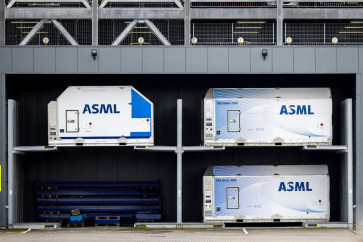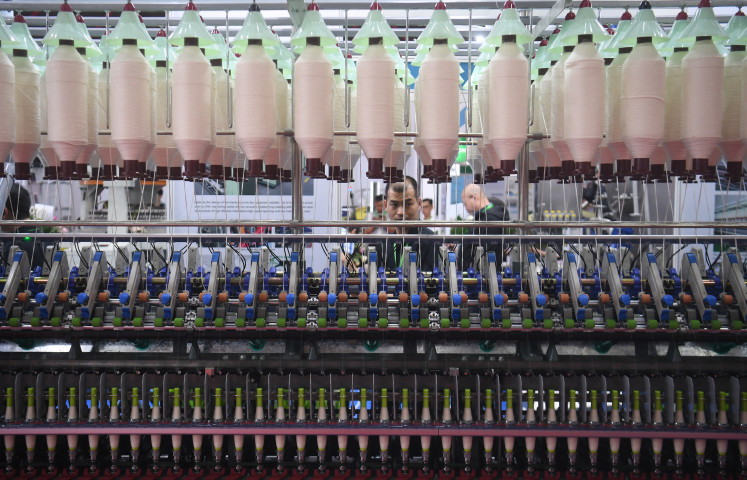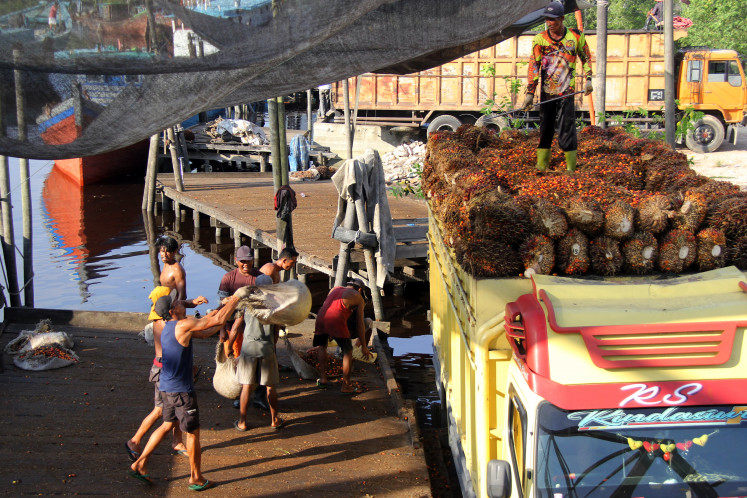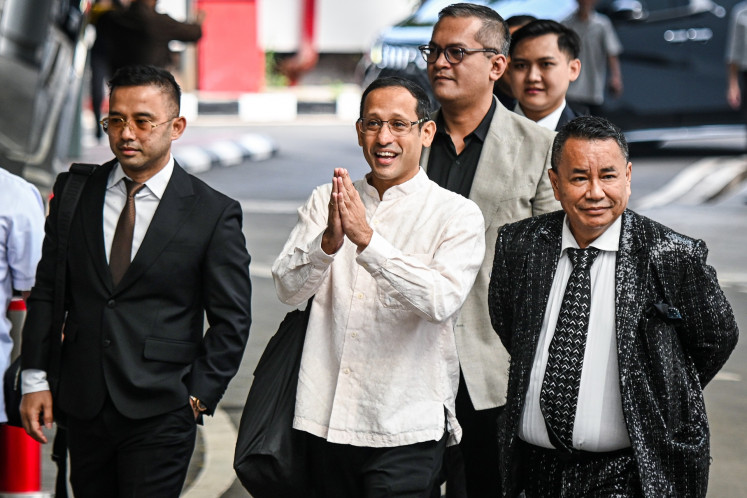Popular Reads
Top Results
Can't find what you're looking for?
View all search resultsPopular Reads
Top Results
Can't find what you're looking for?
View all search resultsEmergency services in Jakarta inadequate, expensive
First aid car: Aryono D
Change text size
Gift Premium Articles
to Anyone
F
span class="caption">First aid car: Aryono D. Pusponegoro, cofounder of the Yayasan Ambulan Gawat Darurat 118 (118 Emergency Ambulance Foundation), shows the interior of an ambulance he designed at foundation headquarters in Ciputat, South Tangerang. Each ambulance, which costs around Rp 250 million (US$19,146), contains all the necessary equipment to deal with an emergency medical situation. JP/Sita W. Dewi
When his father had a stroke in 2010, South Jakarta resident Mustaqim considered calling an ambulance service provider to transport his father to hospital and checked out the rates for ambulance services.
'They ranged between Rp 1.5 million [US$114.80] and Rp 2 million, while free ambulance services usually provided by NGOs or political parties were unavailable. The cost was too much, so I canceled it,' he told The Jakarta Post recently.
When his father had another stroke in 2012, Mustaqim decided to hail a taxi because it was so much easier than calling and waiting for an ambulance.
Meanwhile, free emergency services in the capital are still inadequate. At the moment, the Jakarta Emergency Ambulance, which is run by the city's health agency, operates an ambulance in 27 separate locations in five municipalities, with a number of spare units on standby.
Aryono D. Pusponegoro, a professor of surgery and the co-founder of the 118 Emergency Ambulance Foundation, said the lack of awareness of emergency responses and inadequate emergency services were among the factors that made Jakarta an unsafe city.
'Four thousand people die from heart attacks, strokes and traffic accidents every year in Jakarta. In 2012, 906 people died during the two weeks of the Idul Fitri exodus season. The figure decreased to around 600 people in 2013, but that's still an unacceptable figure,' he said.
Aryono highlighted that an immediate and proper emergency response could save lives. According to global statistics 50 of every 100 people who die in traffic accidents lose their lives within 10 minutes, while another 30 percent to 35 percent die within three hours.
The remainder usually die within days, due to organ failure caused by insufficient treatment during the first three hours after the accident.
'When someone gets a heart attack, stroke or falls victim to a traffic accident and he or she can survive the first 10 minutes, this person will not die as long as he or she gets appropriate treatment,' he said.
He said that many of the existing paramedics were under-trained, especially for emergency situations.
'An emergency paramedic has a tough job assessing and stabilizing an emergency patient within 10 minutes before the ambulance transports the patient to the right hospital,' he said, adding that not all hospitals in Jakarta had 24-hour surgical services.
Although the city is home to numerous hospitals and health services providers, it struggles to provide an integrated response during emergency situations, including incidents involving a large number of victims or disasters.
'We can't just transport a patient to the nearest hospital without understanding the patient's needs and the hospital's capacity and capability,' Aryono said.
Senior paramedic Wahyu Ridwan Nugroho acknowledged that delivering emergency responses was very challenging in congested Jakarta, where people often exacerbated the conditions at traffic accidents because of their curiosity.
'When an accident occurs, people tend to swarm the accident site just to look. They usually don't do anything and probably have no idea what to do anyway. The crowd can be very distracting when I need enough space to provide emergency responses,' he said.
Aryono said he had a dream of developing an emergency motorcycle team to be the first to arrive at an emergency situation, with a senior paramedic delivering the vital assessments and stabilizing the patient while waiting for the ambulance to arrive.
He said funding remained a big challenge for a non-governmental foundation like his. 'It's the government's job to create a safer community,' he said.










